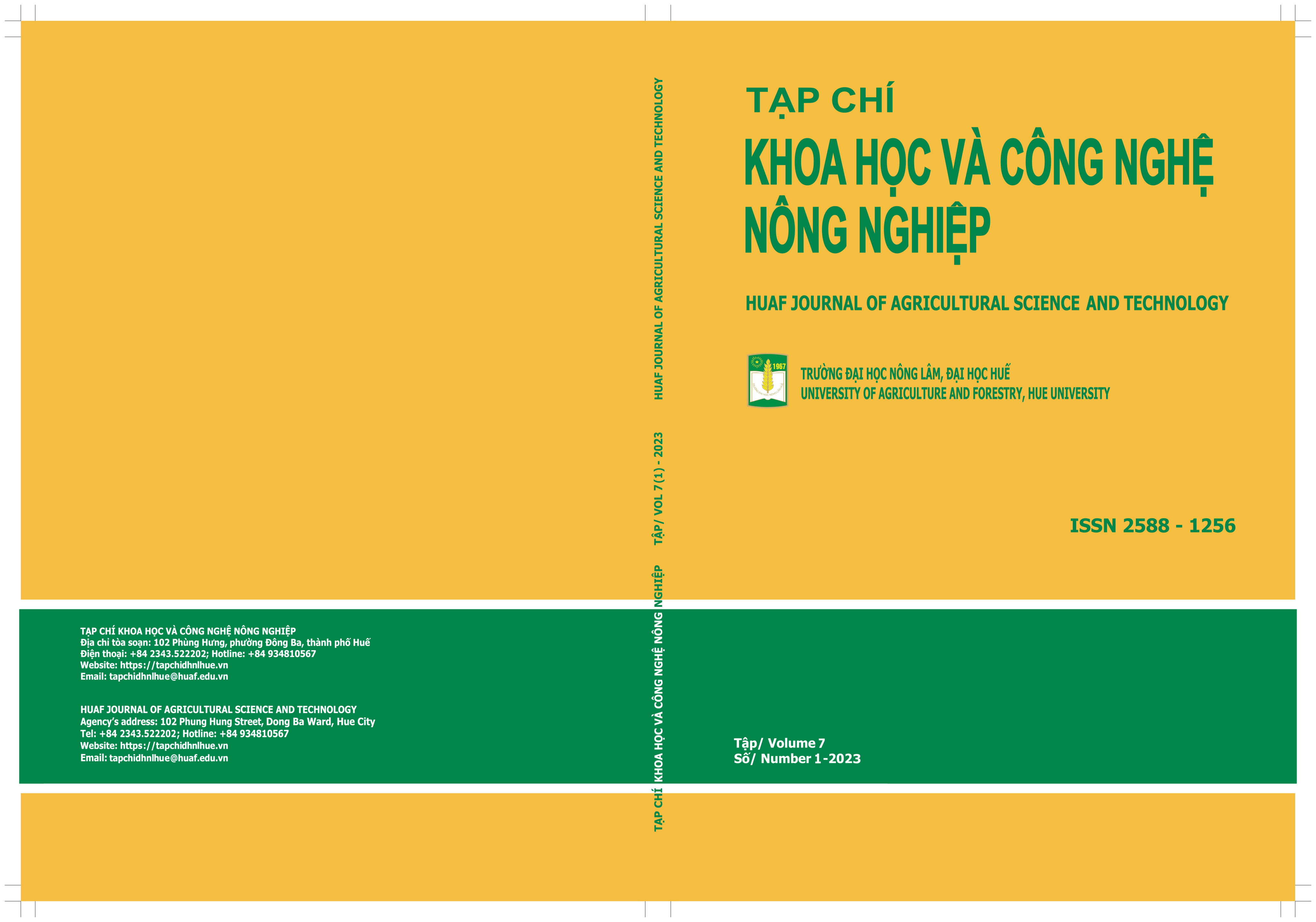##plugins.themes.huaf_theme.article.main##
Abstract
Spotted scat (Scatophagus argus) and rabbit fish (Siganus guttatus) are naturally distributed in coastal areas, having high economic value and being chosen by many people for farming. The demand for these two fish species is very high at the beginning of the main farming season (January-February every year), but this time, the source of fingerling is very scarce because the fish in the nursery ponds are often damaged by floods. Therefore, choosing ponds to overcome floods and polyculture is a solution proposed in this study. The fingerlings usually appear in 2 crops/year (The first crop is from May to June and the second crop from August to September, the appearance of spotted scat is often later than that of rabbit fish). There are 3 treatments: monoculture of spotted scat, monoculture rabbit fish; and polyculture of the two fish species. After 120 days of culture, the size of Siganus guttatus in monoculture reached 7.9 ± 0.93 cm, which was lower than that of polyculture Siganus guttatus with 9.1 ± 1.1 cm (p<0,05); the size of g Scatophagus argus in monoculture reached 5.19 ± 0.57cm, which was lower than that of Scatophagus argus in polyculture with 6.5 ± 0.63cm (p<0,05). The weight of Siganus guttatus in monoculture was 10.24 ± 0.45 g/individual, which was lower than that of polyculturing Siganus guttatus with 16.25 ± 0.51 g/ individual (p<0,05); the weight of Scatophagus argus in monoculture was 4.21 ± 0.31 g/individual was lower than that of Scatophagus argus in polyculturing, reaching 6.68 ± 0.33 g/individual (p<0,05). The survival rate of Siganus guttatus in polyculture was the highest (74%); then in the monoculture (66%); and the survival rate of Scatophagus argus was 50% and 41% in poly and monoculture, respectively (p<0,05).

